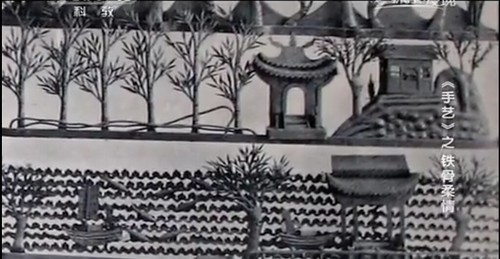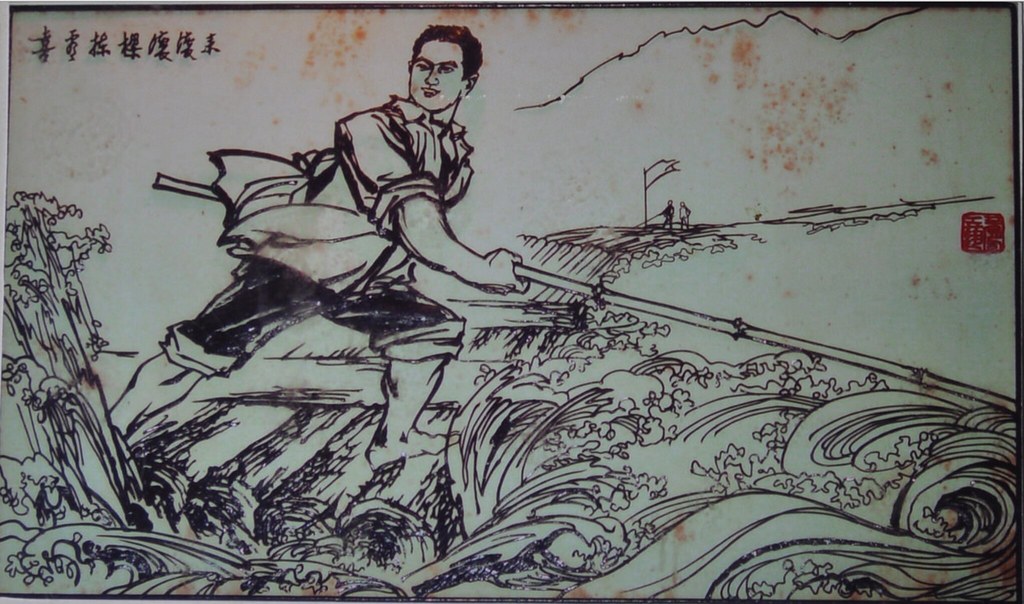With the rise of the Chinese Communist Party and its eventual takeover of Mainland China in 1949, a new form of art arrived: socialist realism. Simply put, this artwork sought to both glorify the “New China” that the CCP was creating and also engineer a pro-Communist mass culture. This culture was, of course, far-left and thus was prone to resisting many aspects of the old order in China. The big shift here was the fact that mass culture in all levels of society was resistant, not just that of the literati and/or working class (with which an association with saved tiehua from demise under Mao Zedong).
1956: The Glory of “New China”
In tiehua‘s state-supported return to the picture in 1956, the art form was reborn in the public eye after years of wars and economic turmoil. In this instance, as seen by the much more detailed and elaborate subject matter, there was a massive departure from the old, simple landscapes of the past. This coincided with the CCP’s ideology: to abandon the past and create a society that is completely new and advanced.
Realist Resistant Youth
The CCP harnessed younger generations even long before it took power. In this tiehua, we see a symbolic representation of this. A young man is fighting a turbulent tide with confidence and leaving behind older figures on a slower boat, with distant mountains to top it all off. Depicted in much greater detail than ever before due to Western realist influences that were now openly applied to art, this young man is symbolically fighting a path towards “New China.”


